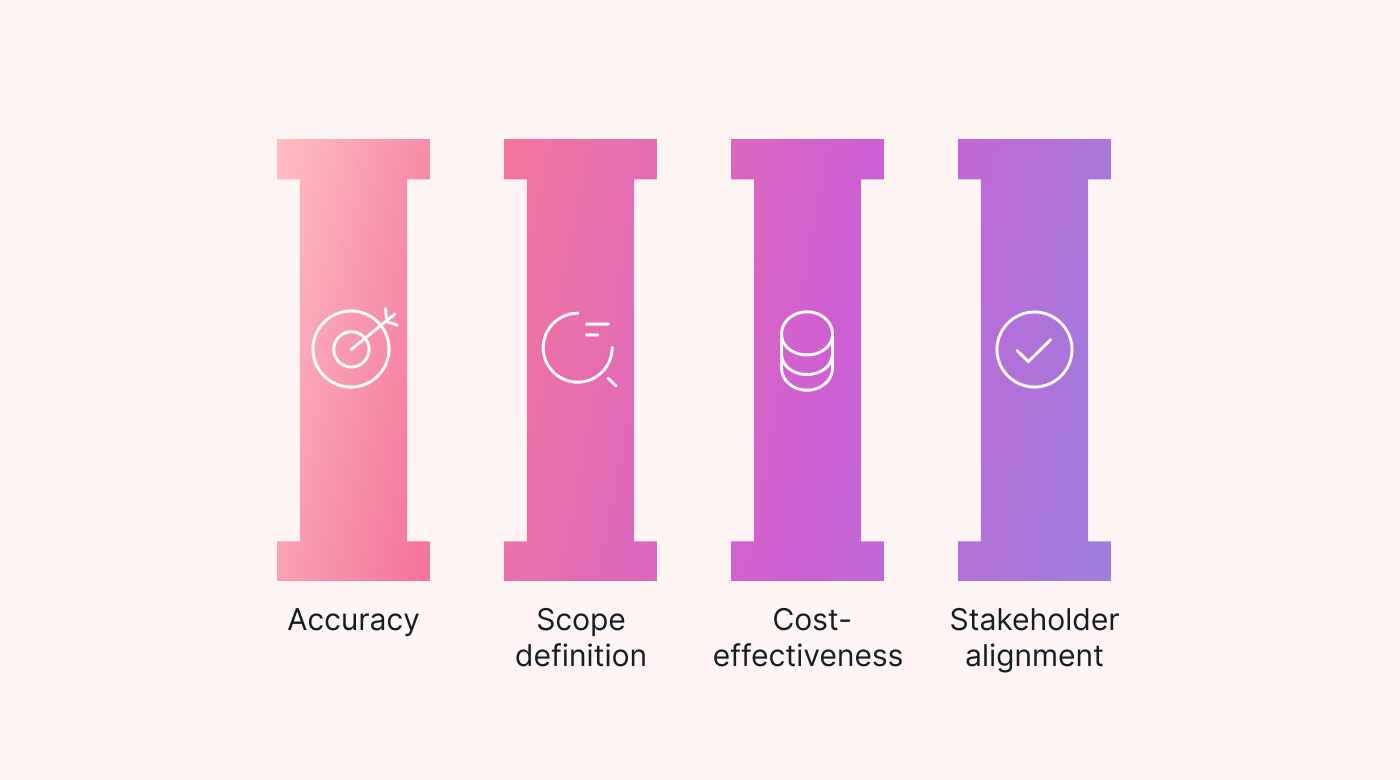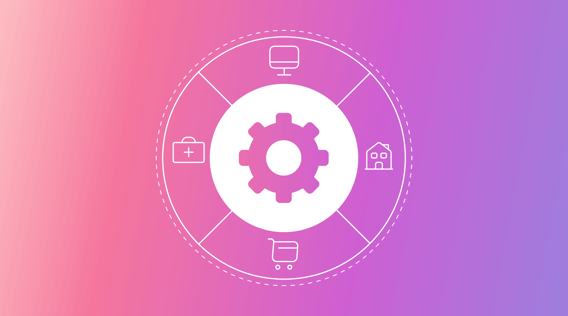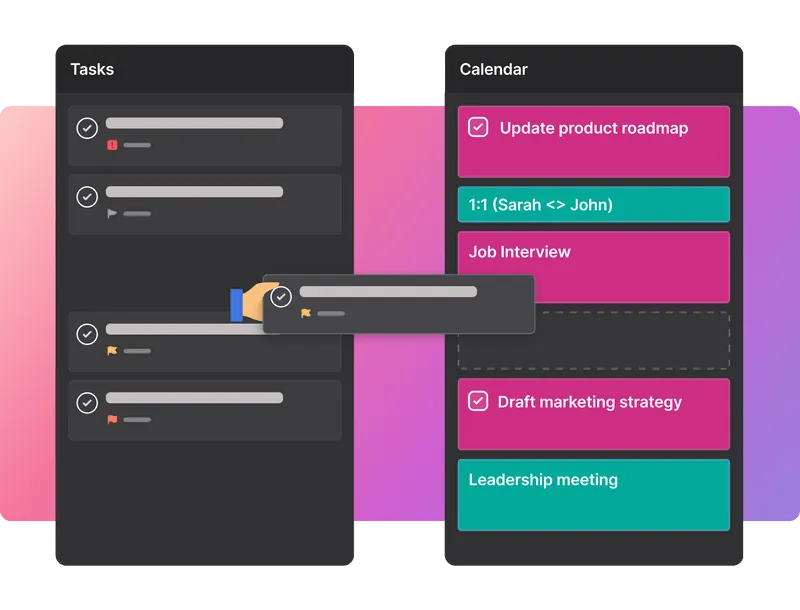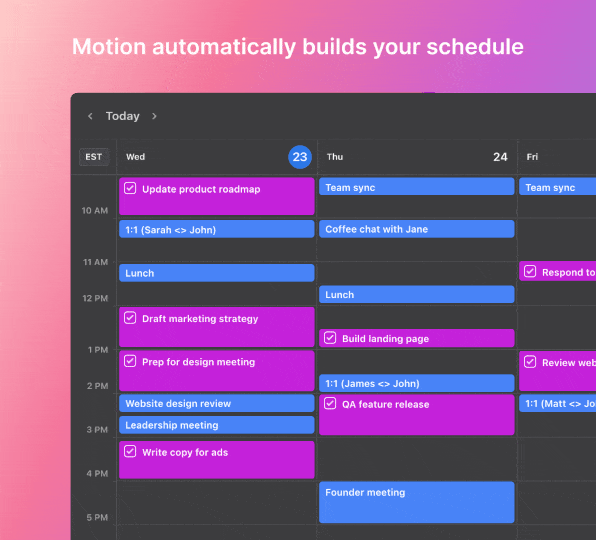If you don't understand the requirements of a project, you won’t produce the right outcomes.
But it’s not as simple as asking your client for their opinions.
You need a clear process to gather, analyze, validate, and prioritize requirements. Otherwise, you risk miscommunications that lead to delays, rework, and unhappy stakeholders.
Read on to learn why requirements gathering is so important and how to establish a robust process to kick off projects successfully.
What is requirements gathering?
Requirements gathering is a vital part of project planning and development. The process involves collecting, understanding, and documenting stakeholder needs and expectations.
Imagine you’re a contractor building a house. How many bedrooms does the homeowner want? How many bathrooms? How big should the house be? Where should it be located? All these requirements are crucial to building your client’s dream home.
The same principle applies whether you’re building new software, designing a new product, or launching a marketing campaign. You must understand what your client needs to create the outcomes your client wants.
Why is this process important?
The requirements-gathering process can be compared to drawing up blueprints for your project. By understanding what’s needed, you can reverse-engineer the process to create action steps and timelines to reach that final vision.
 |
But why bother? Why not just decide on the course of action as the project progresses? Here’s why:
Accuracy: 50% of project rework and 70% of project failures can be blamed on poor understanding of requirements.
Clarifying requirements at the beginning puts you and the client on the same page. This reduces misunderstandings that lead to incorrect work, delays, and project failure.
Scope definition: Over a third of organizations struggle with scope creep. This is where project requirements balloon as the project progresses, eating into your time, budget, and resources.
Gathering requirements at the start of a project helps you to set expectations, create a timeline, and build a realistic budget. With these boundaries in place, it’s easier to protect yourself against unexpected additions later.
Cost-effectiveness: Understanding the intricacies of what a client needs makes it easier for you to charge correctly. That way, your pricing covers the time and resources needed while still generating a good profit.
For example, imagine you’re an architect who quotes a fixed price on a project before understanding the requirements. Later, the customer demands higher-end materials, adding unexpected costs and shrinking profits.
Stakeholder alignment: This process ensures everyone involved understands the goal and how to reach it. Otherwise, you risk taking action that doesn’t align with what your client wants.
For instance, imagine you’re a marketer who creates six months of content without truly understanding the client’s needs. When presented with the finished work, the client disagrees with the campaign messaging. You now have to redo the work at your own expense, delaying the project and reducing (or eliminating) your profit margin.
Requirement gathering process: step by step
It’s not just a case of listing the client’s preferences. There are six main stages of requirements gathering. These steps enable you to understand, document, prioritize, and manage requirements. That way, everyone’s on the same page about what’s expected.
Here’s what you should do during each requirement-gathering phase.
1. Elicitation
Elicitation is an exploratory process where you start collecting the basic client requirements for the project.
Talk to everyone with a stake in the project to understand what they need and how they expect it to be delivered. You’ll hold initial meetings, brainstorming sessions, interviews, surveys, and mind-mapping sessions at this stage.
2. Analysis
This step involves taking a closer look at the requirements you've gathered. You organize requirements, work out what’s most important, and divide needs into categories. This helps you to make sense of how the project will develop.
At this point, you’ll hold requirement modeling sessions. This is where you use visual tools, like diagrams and flowcharts, to represent complex project requirements. This helps your project team and stakeholders understand how project elements interact and fit together.
3. Specification
At this stage, you write everything down. You create official requirements documentation that explains needs and expectations in detail.
Project documents may include a comprehensive list of requirement specifications, a detailed project scope, business process models, technical specifications, user stories, compliance documentation, test plans, and use case diagrams.
4. Validation
During the validation phase, you double-check that all requirements are correct and complete.
This stage often involves final approval meetings with stakeholders, prototyping, peer review of requirements, and cross-referencing with business objectives.
5. Prioritization
Once you’re sure of what the client needs, you sort these requirements to prioritize activities based on how impactful or crucial they are.
This stage helps you focus efforts and resources so that project execution runs smoothly.
6. Management
This last step is an ongoing process where you track requirements alongside work to ensure that the project stays true to initial plans. You update documents, manage changes, and monitor progress.
What do the results of a good requirements-gathering process look like?
A solid requirement-gathering process helps you create a realistic timeline with clear stakeholder expectations.
If you’re committed to gathering requirements properly, you’ll start to see the following results:
1. Projects complete on time
With a clear project timeline and a detailed understanding of expected project outcomes, you’ll experience fewer development delays.
Since you’ll know exactly what your client wants, you won’t have to extend your project deadline to remedy incorrect work. You’ll have a precise understanding of the project scope, so you can create realistic deadlines for each task along the way.
2. Projects stay on budget
Good requirements gathering helps you budget properly so you know how much each step will cost and what resources you need.
When you know exactly what the client wants, you're less likely to make mistakes that cost extra to fix.
3. There’s less scope creep
Understanding the full spectrum of requirements at the beginning stops the project from growing and changing as you go. Your team knows what to focus on, what’s expected, and the parameters in which they need to fit.
4. Your team is happier and more productive
If you don't fully understand client needs, your team can end up repeating or altering work. This can result in lots of overtime or a last-minute rush to meet deadlines.
When your team knows exactly what they’re doing, it’s easier to balance their workload, so they’re more productive without getting burnt out.
5. Stakeholders are satisfied
It’s far easier to meet expectations when you know precisely what they want.
This way of working aids open communication with your clients, making it more likely that you’ll get everything right the first time. And they’ll come back to you the next time.
How do you validate requirements?
Validating requirements is crucial. It ensures that project objectives and outcomes align with what your client wants.
 |
You look at each need very carefully to make sure it’s complete and correct. This might mean meeting with stakeholders, testing designs, or simulating the environment to see if everything works as expected.
Doing things this way keeps you from getting confused or leaving anything important out.
How to validate requirements
- Review each requirement individually
- Confirm with stakeholders for mutual understanding
- Check for ambiguity in requirements
- Validate requirements against business objectives
- Check for any missing requirements
- Solicit feedback on the requirements.
- Update and refine requirements as necessary
What is requirements traceability?
Requirements traceability is like creating a breadcrumb trail to track each requirement back to its original source, such as a stakeholder request, business goal, or legal requirement.
Creating a clear connection between requirement and origin creates a transparent roadmap that provides context and justification for your actions.
Effectively, traceability ensures that all features of the final product link to its corresponding requirement.
A quick guide to requirements traceability
- Identify all sources of requirements
- Document each requirement clearly
- Link related requirements together
- Map requirements to design elements
- Trace requirements through implementation
- Ensure requirements are tested
- Validate fulfilled requirements post-deployment
- Maintain the requirements traceability matrix
- Regularly review and update requirements traceability
How to accelerate requirements gathering with AI
While requirements gathering is essential, it’s a lengthy, cumbersome process. Artificial intelligence (AI) can help accelerate this process and provide the adaptability needed to ensure project development is flexible to change without requiring lots of extra work. Here’s how.
1. Efficiency
The organizational processes around requirements gathering can be time-consuming. Project managers often expend lots of time and energy coordinating and updating teams and stakeholders when they should be focusing on requirements-gathering tasks.
An AI tool like Motion can speed up this process by taking care of routine scheduling tasks. It optimizes team schedules and prioritizes activities automatically so that the right person completes all requirements-gathering tasks on time. Automatic updates keep everyone in the loop without the need for continuous back-and-forth communication.
2. Adaptability
If something changes unexpectedly, such as a sick employee, you may find yourself bogged down with menial team coordination.
AI helps you adjust by automatically reorganizing team schedules to accommodate changes. This keeps everything on track without the need for lots of manual administration.
3. Cost saving
By reducing the manual work needed to schedule requirements gathering tasks and update team members, AI helps to save on labor costs.
Plus, a tool like Motion provides a centralized place for everyone to access documentation and communicate about the project.
This reduces time spent searching for the latest iteration of project documents and ensures that everyone receives the right updates in real-time. Since everyone stays up to date, there’s less chance of incorrect work, which can be costly to remedy later in the project.
Manage requirements gathering tasks with Motion
The requirements-gathering process is crucial to keeping stakeholders happy. If you’re unsure about what’s expected, you’ll find it tough to deliver what your clients want.
Take the manual work out of organizing requirements-gathering tasks, and coordinating meetings. Use Motion AI to analyze stakeholder calendars and schedule the right people in the right place at the right time so you don’t have to.







